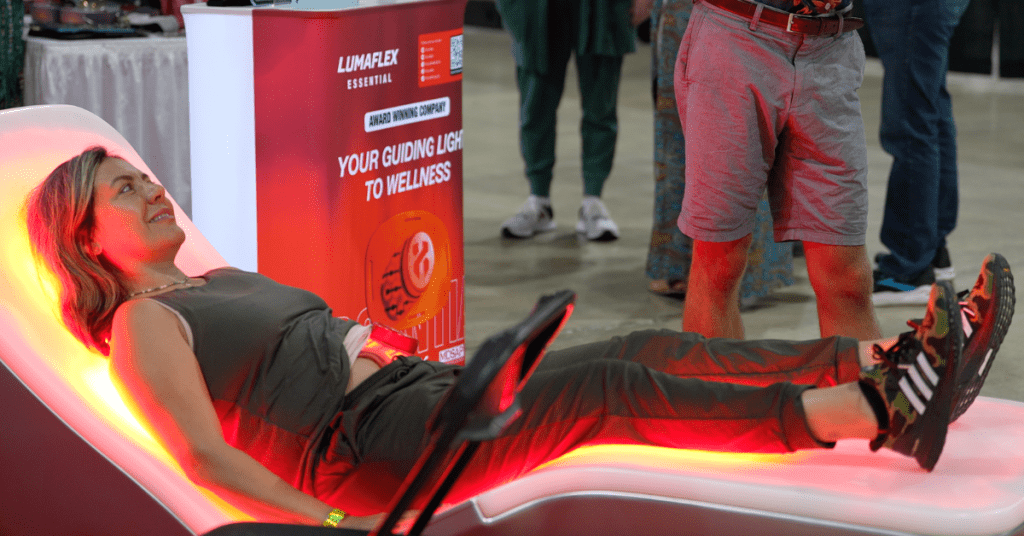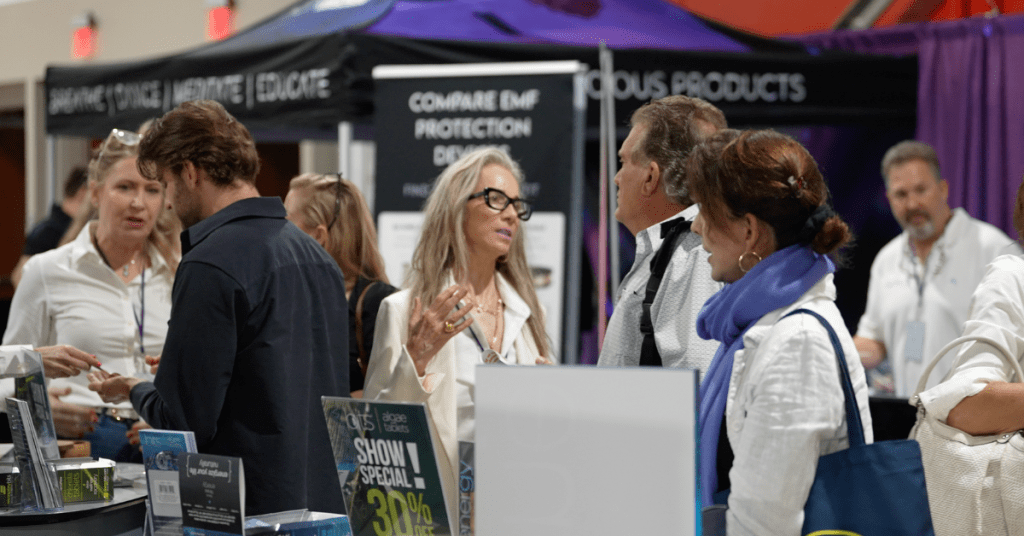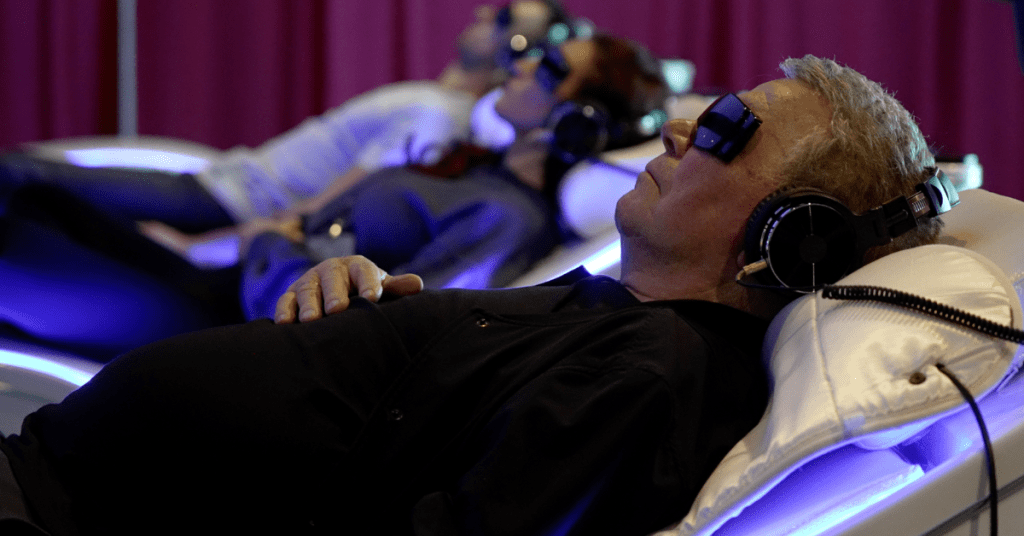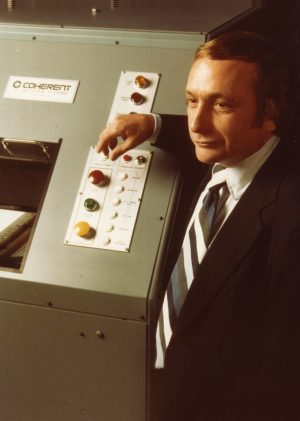Biohacker Expo, Feb 28 – Mar 1, 2025 in Miami
What first drew you toward biohacking as a personal practice?
At 45 years old, I was misdiagnosed with a traumatic brain injury after a poorly administered SPECT scan showed low activity in the front and back of my head. The tracer was administered while I was lying down, meditating, with my eyes closed for over 10 minutes. The neurologist insisted that a bump on my head when I was ten was coming back to haunt me. “I see this all the time,” he said. He prescribed Hyperbaric Oxygen Therapy, Neurofeedback, and a drug called Nimodipine (off-label) to open the blood vessels in my brain. I refused to take the drug despite significant pressure from the doctor and my husband.
Standing up for myself in that way was my first act as a biohacker. Oftentimes, biohacking isn’t what we do to our bodies; it’s what we choose not to do. Biohackers limit or avoid sugar and alcohol, reduce screen time at night, and restrict their feeding window. We’ll try many things, but biohacking usually starts with “No.”
How do Biohackers perceive the main Healthcare system?
Biohackers recognize that conventional healthcare often operates within tight constraints—insurance coverage, FDA approvals, and standardized treatment protocols. We understand that these safeguards aim to ensure patient safety and efficacy. Yet, we also see opportunities to supplement this system with advanced diagnostics and emerging therapies that aren’t insurance-approved.
It’s easy for Managed Care to dismiss biohacking as experimental because it operates outside their purview. However, Functional Medicine is rapidly expanding for doctors who want to diversify their practice with advanced testing, peptides, hormones, exosomes, plasma, hyperbaric oxygen therapy, photobiomodulation, cold plunge, PEMF, and more. Many functional and integrative practitioners already leverage these tools through cash-pay services, ultimately broadening the toolkit physicians can use to help patients achieve better long-term health outcomes.

What is Metabolic Freedom, and why is it so important to Biohackers?
Biohackers don’t get hangry. More than any other goal, we value metabolic freedom to make use of glucose or ketones as needed to maintain our energy. This metabolic flexibility can help maintain stable energy levels, provide mental clarity, and reduce long-term health risks. By minimizing reliance on constant carbohydrate intake, we aim for a state that clinical evidence suggests can improve metabolic markers like insulin sensitivity, lipid profiles, and inflammatory markers.
Biohackers are resilient to whatever comes our way, whether a holiday indulgence or a missed meal. The food industry has created hangry food addicts that need snacks between meals to maintain balance. Biohackers do not generally experience this cycle of highs and lows.
Could you share a moment in your own journey, Sandy, when you realized that a biohacking approach offered answers that the conventional healthcare path did not?
I experienced sudden, severe brain fog that impaired normal cognitive functions. My first instinct was to see a neurologist, but this yielded my first misdiagnosis and off-label drug prescription of Nimodipine. By following my gut instincts, I had to get smarter about my body and curious about other possible causes.
If it weren’t for Dave Asprey, the “Father of Biohacking,” I wouldn’t know what was making me sick. His story about the toxic effects of mold on his brain aligned with my own experience, and this led me to a Functional Medicine doctor who could test me for mycotoxins. Though this test is outside the scope of conventional medicine, I believe the standard healthcare model would not have led me to find and resolve this problem in my body.
A Functional Medicine MD diagnosed me with CIRS, Chronic Inflammatory Response Syndrome, and I’m happy to say that five inflammation markers (hs-CRP, IL-1β, IL-6, IL-8, and TNF-α) are well within normal range after 4 years of biohacking. I did not use any conventional therapies or pharmaceuticals.

How are Biohacking and Functional Medicine Similar and Different?
Biohacking and Functional Medicine share common goals for elevating health and well-being.
Functional Medicine practitioners adhere to a clinical framework guided by advanced testing and professional training to uncover the root causes of disease. It’s less focused on symptom management than conventional care and is not as free-wheeling as biohacking. Functional practitioners have advanced testing options that are not available directly to consumers, and they can be a profound resource for anyone seeking optimal health.
Biohackers tend to get ahead of themselves and try supplements and devices before identifying a root cause. This may be due to the expense of Functional Medicine. My doctor charged $600 an hour, and my first visit resulted in a total expense of $13,000 after all the tests were ordered.
Biohackers don’t want to go it alone. We want a trained professional to help us achieve our goals, but it’s incredibly expensive if we don’t do it on our own. Currently, the best options for at-home testing include Function Health ($499) for everything but inflammation markers and Jinfiniti’s AgingSOS® Senescence & NAD Panel ($598) for five inflammation markers.
In the six months, I didn’t know what was wrong with me. I started biohacking without any real progress. Biohacking on its own is great for healthy people but not for sick people. Sick people need more than supplements and high-tech devices.

Have you ever had an experience where biohacking went terribly wrong? Yes, going it alone can be dangerous. Before I discovered Functional Medicine and that mold was the root cause of my symptoms, someone suggested I might be suffering from arsenic poisoning. I searched online for arsenic tests and took a “Heavy Metals” urine test on my own.
Without understanding what I was doing, I happened to take activated charcoal the night before I took the urine test. I was also unaware that crab cakes have a form of arsenic that is not known to be toxic to the body, and I’d eaten a crab cake 36 hours before my test.
The lab tech was so alarmed that she called me, saying, “I’m not supposed to call you.” That’s never a good start. “You have so much arsenic in your body, you might just die.” I went from happy to dying in 60 seconds flat. A friend referred me to a clinic for chelation. Fortunately, that clinic took my blood before starting treatment, and it turns out I didn’t have any heavy metal toxicity at all.
What are some differences between the biohacking and longevity movements?
The longevity movement involves large-scale research and significant investment into therapeutics that may slow or reverse aspects of aging at a population level. On the other hand, Biohackers emphasize immediate, data-driven lifestyle modifications to improve current performance and well-being. While “longevity” may garner increased public interest and funding, biohacking remains an individual practice inside a robust community.
The word “biohacking” has lost its luster in light of this. Google searches for “biohacking” have dropped 33% in the last year with 22,000 average monthly searches, making way for a 22% increase in searches for “longevity” with 50,000 average monthly searches.
Even with that decline, biohacking continues to deliver as a psychographic. I can be a “Biohacker,” but there is no equivalent for longevity. There is no concept for a “Longevitor.”

What can Biohackers bring to the MAHA movement to Make America Healthy Again?
Companies once considered part of a biohacking niche are at the forefront of research that can be used to Make America Healthy Again. These companies have performed clinical trials and generated valuable data to establish an evidence base that physicians and researchers can confidently evaluate.
Companies like TrueMed are verifying these studies and offering prescriptions for testing, supplements, therapies, and even gym memberships that are available through HSA/FSA accounts.
Sandy, as you look at the MAHA movement and your own journey, what motivates you to keep sharing your insights and experiences, even as the landscape evolves?
I regularly encounter people with challenging, unresolved health concerns: persistent gastrointestinal issues, chronic pain, cognitive difficulties, and other conditions that may not respond to standard medications or procedures. I want people to have access to clear directives on what it takes to be healthy.
This is why I started Biohacker Expo. Our next event takes place in Miami on February 28th and March 1st. We’ll have physicians, executives, coaches, biohackers, and other health enthusiasts discussing what it takes to be healthy in 2025.
Learn more about the Biohacker Expo event by visiting https://biohackerexpo.com/.
At TopDoctor Magazine, our mission is to foster connections within the health and wellness community, acting as a vital bridge between doctors and patients and facilitating collaborations between medical companies and healthcare professionals.
Our purpose extends to empowering our readers, providing them with the knowledge to make well-informed healthcare and lifestyle decisions.
We take pride in being the ultimate resource for interviews with health and wellness leaders, delivering trending medical news, and covering a wide range of healthy living topics.






0 Comments